|

|

|
|
ボンバーマン
©1990 Hudson Soft / vol.34
Release : 1990-12-07 (¥5300)
HuCard (2 Mbits) HC90036
Backup Ram
Action game
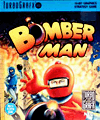

|
Released in America as
BOMBERMAN
( TGX020053 )
|
|
Bomberman is an action game by Hudson Soft and the first
episode of the iconic series to be released for the PC Engine system.
The villainous black Bomberman is on a diabolical mission to control the
world, and he has kidnapped Lisa, Dr Mimori's daughter.
The genius doctor, inventor and creator of the Bombermen, sends Shirobon,
the cute protagonist of the game with his odd looking helmet and tight uniform, to
rescue Lisa and traverse the numerous floors of black Bomberman's heavily
guarded castle. The goal of the game is rather simple - the player must complete each
level by eliminating all the roaming critters that populate them, find the exit door and
move up to the next level. But the meat of the game lies elsewhere... Bomberman
comes equipped with bombs, and these bombs come with a bit of a twist - they don't
explode when dropped or on contact. Instead, they only ignite when their time fuse run
out, or if hit by the blast from another bomb. Additionally, bombs create lethal walls
of fire in four directions and players must imperatively stay away from their blasting
range. That's it, just pepper a power-up icon hidden in each level (such as the ability
to drop more bombs, increase their destructive range, walk through walls or remote control
bombs), and here you have one of the simplest and yet most addictive concept in video
game history. Of course, any Bomberman game wouldn't be complete without a
multi-player option, and this version includes such treat and gives up to five
players the chance to battle one another in frantic dead matches. As a side note,
this version of Bomberman is also compatible with the 'com' link that
allows two PC Engine GT owners to fight one another in intense versus battles.
Bomberman consists of eight worlds made our of eight levels each and also
features a password system to resume play on specific levels.
|
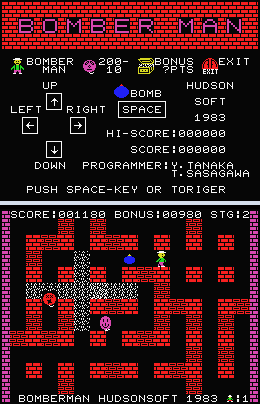 A complete history of the iconic Bomberman franchise would most certainly not
fit in this tiny space, no doubt about it. Bomberman is probably the most popular
and quintessential party game ever made, and is one of the most recognizable video game
franchise. The series has spread across countless platforms, features countless sequels,
adaptations and spin-offs and this for nearly every single video game system ever
produced by mankind. Nearly one hundred games staring the little white character have
probably been released to this day, and although the Japanese company Hudson Soft
is no more (absorbed by the giant Konami in 2012), the Bomberman franchise
is still going strong (even if a shadow of its former self).
Bomberman first appeared way before Hudson Soft produced the PC Engine
system. An article from Next Generation magazine from March 1995 mentions that the first
Bomberman was written in 1980 as an exercise to demonstrate Hudson Soft's own
BASIC compiler (called the Hu-BASIC). But the game was eventually released in 1983
for the NEC PC-8801, NEC PC-6601, Sharp MZ-700 and FM-7
Japanese computers (and for the Japanese MSX the following year, picture on the right).
As a side note,
the game was also ported in 1984 to the ZX Spectrum and MSX in Europe, and
although it was called "Bomber Man" in Japan (well, the original title was
爆弾男 (Bakudan Otoko), which translates as "Bomb Man"), it was renamed "Eric and the
Floaters" in the west. Furthermore, the game didn't even star the robot-character
we all know. Instead, the main protagonist was a more generic explorer wearing a hat
and equipped with bombs. The enemies in the game were balloon-like floating creatures,
which can be also seen in some of the early iterations of the game (they are the first
enemies the player encounter in the PC Engine version tested here). Although the
game is really basic and has definitely aged, it still features the core gameplay that
made the series so popular and addictive (but doesn't include any multi-player option).
As a side note, the original game credits two programmers - Y. Tanaka and
T. Sasagawa. Could Y. Tanaka and Toshiyuki Sasagawa be
Bomberman's original creators ? Although that could be the case,
Shinichi Nakamoto (who became Hudson Soft's director of R&D in 1986
and the company's vice president in 1999) is often credited as the original creator
(see the second half of this article about the Famicom version of the game).
Interestingly, a version called 3D Bomberman followed the same year for
the MSX, and the title screen indicates that this rather unique
(and questionable) 3D version of Bomberman was created by a programmer
named Kawaguchi (could he be Yoshiyuki Kawaguchi ?).
A complete history of the iconic Bomberman franchise would most certainly not
fit in this tiny space, no doubt about it. Bomberman is probably the most popular
and quintessential party game ever made, and is one of the most recognizable video game
franchise. The series has spread across countless platforms, features countless sequels,
adaptations and spin-offs and this for nearly every single video game system ever
produced by mankind. Nearly one hundred games staring the little white character have
probably been released to this day, and although the Japanese company Hudson Soft
is no more (absorbed by the giant Konami in 2012), the Bomberman franchise
is still going strong (even if a shadow of its former self).
Bomberman first appeared way before Hudson Soft produced the PC Engine
system. An article from Next Generation magazine from March 1995 mentions that the first
Bomberman was written in 1980 as an exercise to demonstrate Hudson Soft's own
BASIC compiler (called the Hu-BASIC). But the game was eventually released in 1983
for the NEC PC-8801, NEC PC-6601, Sharp MZ-700 and FM-7
Japanese computers (and for the Japanese MSX the following year, picture on the right).
As a side note,
the game was also ported in 1984 to the ZX Spectrum and MSX in Europe, and
although it was called "Bomber Man" in Japan (well, the original title was
爆弾男 (Bakudan Otoko), which translates as "Bomb Man"), it was renamed "Eric and the
Floaters" in the west. Furthermore, the game didn't even star the robot-character
we all know. Instead, the main protagonist was a more generic explorer wearing a hat
and equipped with bombs. The enemies in the game were balloon-like floating creatures,
which can be also seen in some of the early iterations of the game (they are the first
enemies the player encounter in the PC Engine version tested here). Although the
game is really basic and has definitely aged, it still features the core gameplay that
made the series so popular and addictive (but doesn't include any multi-player option).
As a side note, the original game credits two programmers - Y. Tanaka and
T. Sasagawa. Could Y. Tanaka and Toshiyuki Sasagawa be
Bomberman's original creators ? Although that could be the case,
Shinichi Nakamoto (who became Hudson Soft's director of R&D in 1986
and the company's vice president in 1999) is often credited as the original creator
(see the second half of this article about the Famicom version of the game).
Interestingly, a version called 3D Bomberman followed the same year for
the MSX, and the title screen indicates that this rather unique
(and questionable) 3D version of Bomberman was created by a programmer
named Kawaguchi (could he be Yoshiyuki Kawaguchi ?).
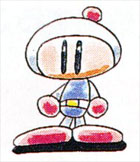 The first game to star the eponymous Bomberman character we all know was the
Famicom version released in 1985. Well, not exactly, the sprites were actually
borrowed from the Famicom port of Lode Runner released in 1984, and the
enemy robot guards do share a striking resemblance with the now classic Bombermen
(see Lode Runner).
As a matter of fact, both Famicom ports of
Lode Runner and Bomberman were programmed by the same person,
Shinichi Nakamoto. An urban legend has it that Shinichi Nakamoto
created the Famicom port of Bomberman during a 72 hours marathon
programming session (according to renowned Japanese journalist and video game
analyst Hisakazu Hirabayashi), which may explain why Nakamoto borrowed
the Lode Runner's sprites. In any case, Bomberman for the Famicom
is indeed directly connected to Lode Runner and is somewhat of a prequel - the
game's ending reveals that the robot controlled by the player turns into the
Lode Runner human character as he escapes from the underground maze. In 1995,
Shinichi Nakamoto admitted that the Famicom version of Bomberman
was the one and only version of the game - and we are inclined to agree that this
is the version that started the 'Bomberman' cultural phenomenon.
The first game to star the eponymous Bomberman character we all know was the
Famicom version released in 1985. Well, not exactly, the sprites were actually
borrowed from the Famicom port of Lode Runner released in 1984, and the
enemy robot guards do share a striking resemblance with the now classic Bombermen
(see Lode Runner).
As a matter of fact, both Famicom ports of
Lode Runner and Bomberman were programmed by the same person,
Shinichi Nakamoto. An urban legend has it that Shinichi Nakamoto
created the Famicom port of Bomberman during a 72 hours marathon
programming session (according to renowned Japanese journalist and video game
analyst Hisakazu Hirabayashi), which may explain why Nakamoto borrowed
the Lode Runner's sprites. In any case, Bomberman for the Famicom
is indeed directly connected to Lode Runner and is somewhat of a prequel - the
game's ending reveals that the robot controlled by the player turns into the
Lode Runner human character as he escapes from the underground maze. In 1995,
Shinichi Nakamoto admitted that the Famicom version of Bomberman
was the one and only version of the game - and we are inclined to agree that this
is the version that started the 'Bomberman' cultural phenomenon.
|
|
This PC Engine version of Bomberman was also ported to the
Sharp X68000 Japanese computer in 1990 by System Soft.
Although this version is fairly identical to the original game, it only
allows four players (instead of five) to battle each other in the multi-player
mode. Interestingly, the game was also ported to several home computers in
Europe by Ubisoft, but it was curiously renamed Dyna Blaster
and was released for the Commodore Amiga (1991) and the
Atari ST (1992). Finally, a PC MS-Dos version of Dynablaster
(based on the PC Engine version of the game) was also available in the
United States. As a side note, Dynablaster was also available
for the NES and Game Boy in Europe, but they are completely
different games (Bomberman II for the NES, and
Bomber Boy for the Game boy).Finally, the PC Engine version of
Bomberman was also included in a compilation called Bomberman Collection Vol.1
released by Hudson Soft for PC Computers in 2003
(along with Bomberman'93 and Bomberman World).
|
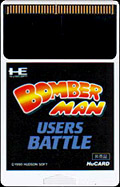 A non-commercial and very limited edition of Bomberman
exists (picture on the right). 'Bomberman Users Battle' comes as a single HuCard and
only features the multi-player mode. The title screen was edited and is
different than the release version - it offers two options,
'Users Battle 1' and 'Users Battle 2', which correspond to
Normal Mode and Skull Mode from the original. It is
difficult to know for sure how this promotional game was officially
distributed. Some sources indicate that it was released through the
Hudson Soft Fan Club to commemorate the release of Bomberman
for the PC Engine. This card is, of course, really sought-after by
collectors and rumored to have been produced in no more than a thousand units.
A non-commercial and very limited edition of Bomberman
exists (picture on the right). 'Bomberman Users Battle' comes as a single HuCard and
only features the multi-player mode. The title screen was edited and is
different than the release version - it offers two options,
'Users Battle 1' and 'Users Battle 2', which correspond to
Normal Mode and Skull Mode from the original. It is
difficult to know for sure how this promotional game was officially
distributed. Some sources indicate that it was released through the
Hudson Soft Fan Club to commemorate the release of Bomberman
for the PC Engine. This card is, of course, really sought-after by
collectors and rumored to have been produced in no more than a thousand units.
|
Teaser text from the American's version:
It's the ultimate blast for up to 5 players! You're Bomberman, battling in a maze,
blowing the walls and each other to bots. There's danger around every corner.
Destruction behind every wall. And 8 worlds or enemies out to waste all of you !
So plan your moves and fire up your fuse... only one of you gets out alive !
And now, with two TurboExpress (TM) Handheld Entertainment Systems and one Turbolink (TM)
Communication Cable, explosive two-player competition goes right along with you. The action
will blow you away !
|
Game Staff (Copied from the end credits) :
|
Game Designer
Tsukasa Kuwahara
Main Programmer
Atsuo Nagata
| |
Sub Programmer
Wrecker Muroya
Graphics Designer
Hideyuki Ogura
Mika Sasaki
|
|
Music Composer
Atsushi Chikuma
Sound Programmer
Keita Hoshi
|
|
Produced by
Hudson Soft
|
|
G
O
O
D
I
E
S
|
|
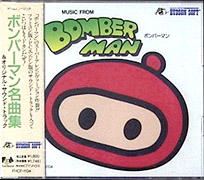
Japanese Soundtrack
|
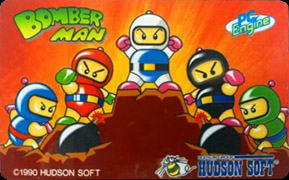
Japanese Phonecard
|
|
|
O
M
A
K
E
|
|
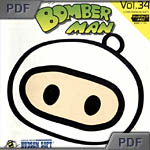
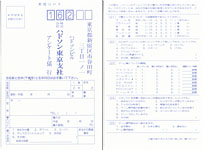
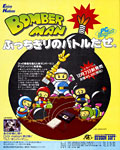
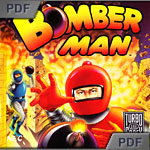
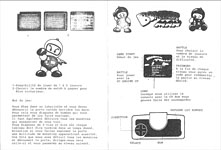
|
|
|
Click on picture to enlarge |
|
|
|
LK

|
|
Add your Pov here !
|
P
O
V
s
|
|
Bomberman is a classic among classics. Well, this first episode may
have slightly aged - one single character to choose from, simple levels and
bosses on the tiny side of small. But even if later episodes released for the
PC Engine system have better graphics, more complex scenery, expansive
levels, character-pets you can ride and so forth, they all follow the same simple
gameplay mechanics laid down by this first episode, and believe me, the gameplay
here absolutely shines! Minutes and hours will fly by with ease as you drop bombs,
vaporize helpless critters and run to the exit. Admittedly, levels are a bit
repetitive in single player mode, and although the game includes eight worlds,
there is not much variation in terms of gameplay... This is why
I would advise to find other episodes first, such as
Bomberman'93 or the
excellent Bomberman'94.
But Bomberman is still a timeless classic
and an unavoidable masterpiece (and the first one to feature a five-player
mode!). Before I wrap up this review, I want to rant about
something that really bothers me... The American Turbografx-16 cover art is
probably one of the ugliest illustration I have ever seen, only beaten by a hair
by the equally terrible
Dungeon Explorer.
What were they thinking !?
|
|
|
|